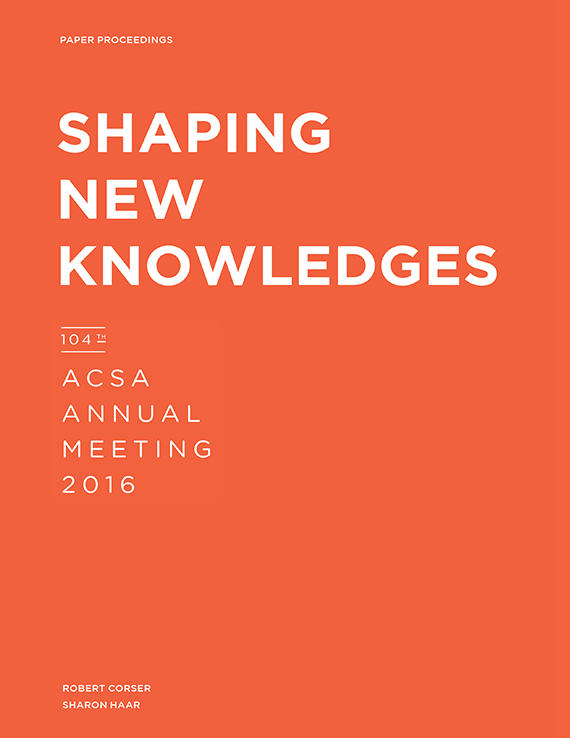Author(s): Beverly Choe & Jun Sato
This methodology encouraged the fluid, adaptive growth of the structures from cellular,module based models to a full scale installation. The spirit of play and investigation was realizedthrough a series of exercises that began with small-scale modeling and the developmentof a structural module, which gradually grew into larger, more complex aggregations. Thefocus then shifted to larger scale prototyping and the refinement of the assembly tectonics,and ended with the full scale realization of the design. Through these steps, students gaineda hands-on, immediate, and palpable understanding of the properties and behaviors of theglass. Visually, students explored how transparent and translucent surfaces could act as aperceptual filter, creating rich spatial experiences.This paper will begin with a discussion of glass in its historic context, and then follow with amore detailed description of the pedagogical, structural, tectonic, experiential and spatialgoals and results of the workshop. The intent was for students to test the range of spatialpossibilities for specific structural combinations, and to then synthesize these findings into asingular installation.GLASS AND THE DISAPPEARING FRAMEIn 1914, German poet and writer Paul Scheerbart praised glass for its ability to transform thebuilt environment and elevate culture through its openness and color. For him, the enclosingquality of conventional brick buildings imposed a separation between a person and society,resulting in isolation and darkness. He envisioned a new architectural world, in which lightfilledspaces reconnected society, and boundaries between indoors and outdoors dissolved.A new, prismatic landscape would replace the dreary, masonry cityscapes of old Europe. Ofcourse, this crystalline world relied on the liberation of the facade from its opaque, loadbearingfunction. So he described a two-part system in which iron framework is shaped tosupport the glass. Together, iron and glass could release buildings from an oppressive pastand activate a new, free form environment and society.As revealed in Scheerbart’s descriptions, the non-structural properties of conventional glassconfined its role to one of cladding and enclosure. Bruno Taut, in his celebrated glass pavilionBEVERLY CHOEStanford UniversityJUN SATOUniversity of TokyoTransparent
Transparent Structures was a Design/Build course taught to two different groups ofstudents from Stanford University, University of Tokyo, and Keio University duringthe spring and summer of 2015. This course asked students to investigate the useof glass as both a structural system and spatial medium. Following a methodologywhich we call Responsive Structures, students tested the physical and visual propertiesof engineered high-strength glass, and developed structural systems and spatialconfigurations to expand our ideas of what glass can do.
Volume Editors
Robert Corser & Sharon Haar
ISBN
978-1-944214-03-6

 Study Architecture
Study Architecture  ProPEL
ProPEL 
